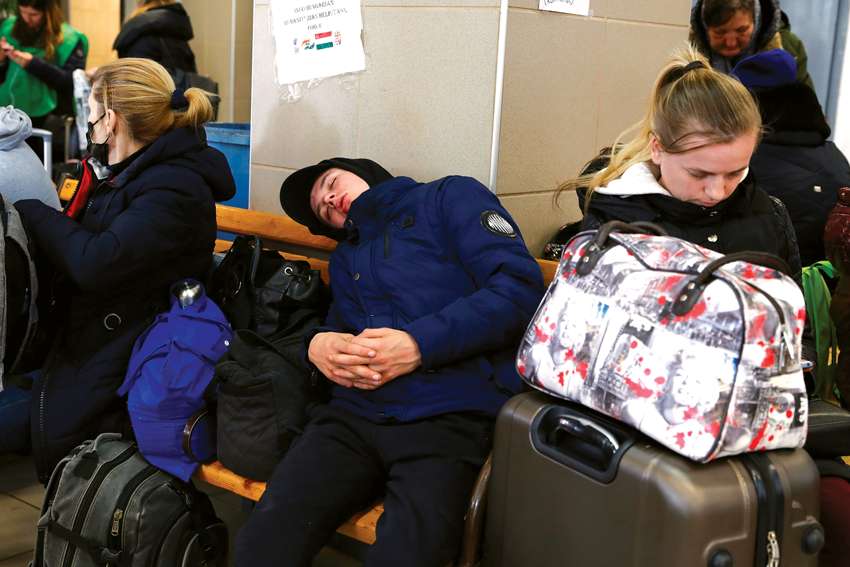It’s a surge that can be attributed to a recent influx of Ukrainian immigrants fleeing the war in their homeland, say school division officials.
The mostly urban centre — the division comprises Saskatoon and the surrounding rural communities of Biggar, Humboldt, Martensville and Warman — saw few newcomers arrive during the pandemic. But due to the ongoing Russo-Ukrainian conflict, a number of Ukrainian families have sought refuge in Canada. Many have landed in Saskatchewan, which since the start of the war last February has accepted around 3,000 asylum-seekers.
Learning Services Superintendent Francois Rivard says that these Ukrainian refugees, many of them Catholic, are finding homes across GSCS, Saskatchewan’s largest Catholic school division.
“Immigration accounts for almost 50 per cent of our growth this year, a large cohort of which is made up of Ukrainian students,” said Rivard. “Many folks coming in are looking for that safe landing spot, and we’re excited to welcome these students looking for Catholic education.”
Since increased enrolment for the 2022-2023 school year overshot previous modelling, the Catholic school division has been left “juggling” to balance resources like classroom space and teachers with a swelling number of students. Although the situation is unprecedented, Rivard says GSCS remains welcoming and has come up with solutions to deal with increased growth logistics.
“Many of our Ukrainian students are coming with little to no English, so we have deployed (English as a Second Language) resources,” he said.
Saskatchewan has been fortunate with its high concentration of Ukrainian descendants from past migrations.
“While it’s challenging at times to find staff, we’re blessed to have many qualified teachers who speak Ukrainian. We’ve been working with the provincial teacher’s federation to recruit more bilingual teachers because this is important for program delivery,” said Rivard.
The school division has also made an effort to invest in counsellors and social workers to help Ukrainian students dealing with devastation and loss from the war. Rivard has been working particularly closely with Bishop Filevich, the only school in the province with Ukrainian bilingual programming, to facilitate resources following significant growth.
Robyn Flaman, principal of St. Nicholas Elementary School in Saskatoon, reported an enrolment uptick of 150 students over the 2021-2022 school year, mostly due to immigration. While the dramatic increase in students brought change to the community, Flaman says the school has adapted well.
“We’ve been blessed. Although change can be difficult, our students are so welcoming and we can see new families adjusting to their communities,” said Flaman. “In working closely with human resources, we had room within our school to accommodate everyone. We were able to tailor pre-existing spaces to build more classrooms.”
Since the increased enrolment is due mostly to Ukrainian refugees, an end to the war might mean a mass exodus in the GSCS population. Rivard, who has been in education for 25 years, says the division has been asking long-term and short-term questions to address the possible outcomes of the fluid situation, such as expanding the bilingual Bishop Filevich in the event of still more growth.
“There will be some families that find homes in other Saskatoon Catholic schools, while others will return to Ukraine,” he said. “Some people have really fallen in love with Saskatoon and have already made the decision to settle down here. However, because many of the refugees coming in are women and children who have had to leave dad back at home, they don’t see their stay in Saskatchewan as permanent.
“We’re currently discussing how to handle a potential population decrease.”
The province has seen significant enrolment in public schools too, making this the largest student population uptick in Saskatchewan in more than 20 years.
Ukrainian students now attend 612 schools in 58 different school authorities. As a result, the province announced plans to allot another $12.3 million for on-the-ground operations this past November, each school board receiving $5,500 per new student.


